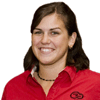
NEW: Regional Calf Report – Central Wisconsin
Posted on November 9, 2012 in Starting Strong - Calf Care
 By Eliza Ruzic, Vita Plus Loyal Dairy Specialist
By Eliza Ruzic, Vita Plus Loyal Dairy SpecialistMother Nature has taken us on a rollercoaster ride in Central Wisconsin this spring, with the warmest March on record and below-average temperatures in April. The swings in weather have kept calf and heifer raisers on their toes to make sure their calves are healthy and growing. We tightened our management, worked through challenges and had success along the way.
The management areas we’ve focused on include ventilation, bedding and feeding protocols. Producers have found that they need to pay close attention to curtain management in buildings to prevent respiratory disease. In March, we had days above 80 degrees and calves and heifers hadn’t lost their winter hair coats yet. That made it especially important to open curtains and turn on fans.
Then in April, with night temperatures dropping to 20 degrees, the curtains were going back up to keep calves from becoming chilled. Another strategy for preventing respiratory problems was to make sure calves always had clean, dry, mold-free bedding.
Calves on high-calorie winter feeding programs were moved back to summer feeding schedules earlier than normal, but producers had to keep a close eye on things when temperatures dipped below freezing again in April.
In many ways, the mild winter was on our side. Calves were able to put some of their extra calories into growth instead of maintenance calorie requirements. The mild winter also made the transition to warm weather a little more smooth.
But the best way to assure a smooth transition to warm weather in the spring is intense management. Keeping the curtains at the proper height, having clean, dry bedding and proper nutrition are sure ways to raise healthy calves.
| Category: |
Calf and heifer nutrition Starting Strong - Calf Care |

